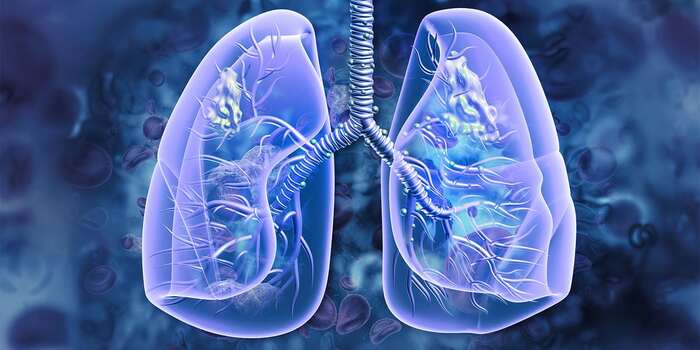
What is lung cancer?
Cancer is a disease in which some cells in a person’s body begin to grow uncontrollably. Lung cancer is a type of cancer that starts in a person’s lungs and may spread to the lymph nodes and other tissues or organs in the body. The process in which cancer cells spread into a different organ is called metastases.
Lung cancer is a common cancers in the world population, affecting approximately 12% of cancer patients in the world. It is also by far the leading cause of cancer deaths, being responsible for 23% or almost 1 out of 4 cancer deaths of the world population.
Lung cancer can be classified into 2 types – small and non-small cell lung cancer these two types are distinguished from each other based on the appearance of the cancer cells under a microscope. Small cell lung cancer is usually found exclusively in people who are heavy smokers, while non-small cell lung cancer can affect anyone. The type of treatment for lung cancer will depend a lot on which type of lung cancer the patient has.
Who is at risk of developing lung cancer?
There are several risk factors that have an increased chance of developing the disease:
- Smoking – People who smoke, especially heavy users, are the most at risk of developing lung cancer. Each cigarette you smoke increases the risk of lung cancer, and it is vital that a person goes cold turkey so that this risk stops increasing.
- Being exposed to secondhand smoke – If you live with somebody who smokes, like a family member or a roommate, then you will also have an increased risk of developing cancer. Either ask that person to stop smoking or move yourself to a different location to address this problem.
- Having had radiation therapy before – If you have undergone radiation therapy before to deal with another cancer, then you will also have an increased risk of developing lung cancer.
- Family history – People who have family members with lung cancer are much more at risk of developing the disease.
Why should you undergo lung cancer screening?
According to the American Lung Association, lung cancer has a five-year survival rate of 56 percent for those cases that were detected when the cancer was still localized in the lungs. Once the cancer has metastasized into other parts of the body, the survival rate drops to a very low 5 percent.
This is why lung cancer screening is very important. If detected early, you are more likely to survive for 5 years due to lung cancer. In general, the five-year survival rate of lung cancer is a very low 18.6 percent compared to other cancers like colorectal (65%), prostate (98%), and breast (90%). Lung cancer screening will allow you to be aware of the disease early and be able to deal with it before it advances to a higher stage.
Just recently, a new test has been used for lung cancer screening to great success. This is called the low-dose CT (LDCT) scan. LDCT scans have been shown to increase the survival rate of people who have lung cancer as it can not only detect the disease, but also pinpoint areas where the cancer cells are most likely located. This helps doctors reduce the amount of work they need done as they can start working immediately to contain the cancer from expanding.
Who should undergo lung cancer screening?
The following people are highly encouraged to undergo lung cancer screening:
- Smokers or those who used to smoke but don’t exhibit any symptoms of lung cancer yet – Early detection of lung cancer greatly increases the five-year survival rate of a person and makes it so much easier to contain or destroy the cancer cells before they can spread to other parts of your body.
- Heavy smokers, especially those who smoke 20 pack years or more – Pack years are a measurement that refers to the frequency of how a person smokes. It follows a simple formula of multiplying the number of packs of cigarettes a person smokes each day by the number of years that person has been smoking.
- People who have a family member with lung cancer – Lung cancer has been shown by studies to frequently appear among family members. This is probably due to everyone being in close proximity with a smoker in the family.
- People in general good health – There are risks in the lung cancer screening process, which is why people who have other health problems are advised to skip the lung cancer screening process.
How do you prepare for lung cancer screening?
Before your scheduled lung cancer screening session, it is important that you inform your lung specialist or doctor if you have a respiratory tract infection. If you have one, the screening will have to be rescheduled at least a month after the symptoms of the infection have gone away. This is done because a respiratory tract infection can cause some issues with the LDCT scan and give inaccurate readings and results.
You should also remove any metals before you undergo the LDCT scan.
This is because metals can cause some interference with the imaging technology. To get the best and accurate results from the screening, patients are advised to remove jewelry, glasses, dentures, and hearing aids.
What should you expect during the lung cancer screening?
Before the LDCT scan, you will be asked to lie on a long table near the machine. Make sure you are comfortable, as the doctor or technologist will transfer to a separate room to operate the CT scan machine. When the machine starts, you should lie still as the table you are lying on will slide towards the machine. The machine will then take images of your lungs. You may be asked by the technologist to hold your breath so that there will be a clearer picture of your lungs.